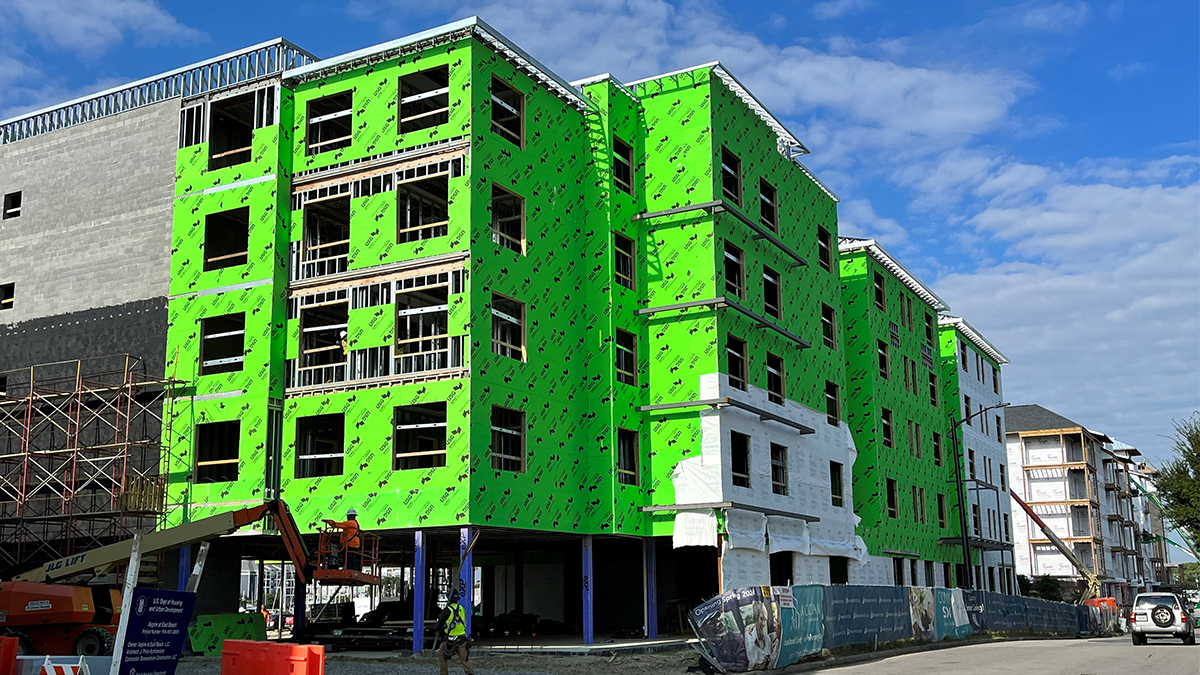
Norfolk’s weak housing market is beset by systemic issues and the trends are troubling.
That’s the upshot of a new housing study unveiled by the city at a City Council meeting Tuesday.
What the report doesn’t include are a lot of major new revelations.
Persistent problems like risks of flooding, concentrated poverty and racial segregation all continue to weigh on Norfolk's housing market — and are many of the same things noted in the city’s 2016 housing report.
But the new analysis gives a detailed look at how development is — and isn’t — happening in the city, and what’s going on with different segments of the city’s population.
Here are three of the biggest takeaways from the new report:
Even as more apartments get built, rentals aren’t really getting more affordable
The report notes that the thousands of new rental units built since 2000 are much less affordable than older stock.
“Recent multifamily construction in Norfolk has tended to be large multifamily (100+ units) developments with average monthly rent about $1,500, mostly 0-2 bedroom units, and no units with affordability restrictions,” the report says.
That $1,500 per month price point is only affordable to renters making north of $60,000 per year.
And even as these pricey apartments have come online, other rentals have disappeared from the market.
Hundreds of homes that were previously long-term rentals have been converted to short-term rentals like Airbnbs in the last few years. The study says that’s cutting into the available housing stock, putting pressure on rental affordability and helping to leave many priced out of Norfolk.
“The median gross rent has been consistently unaffordable for the median renter household, which makes about $39k annually,” the report said.
“The gap between median gross rent and the rent level affordable to the median household has ranged between $100 to $200 per month.”
Norfolk’s fading middle class
The new housing going up is only accessible to higher incomes and median rent is too expensive for median renters.
Norfolk also hosts 22% of Hampton Roads’ subsidized affordable homes while boasting just 13% of the region’s population — so its status as a disproportionate center of regional poverty isn’t likely to change anytime soon.
That leaves those people in the middle-income brackets, who are being squeezed by the housing market and are heading elsewhere. The report gives several explanations for why.
For one: Home ownership in the city is climbing out of reach for the middle class.
“The purchasing capacity of the median-income household was relatively in line with home prices until recently with inflated home values and rising interest rates,” the study says.
Since the beginning of the pandemic, the median household suddenly needed tens of thousands of dollars more to secure an average house in Norfolk than it did before.
“Households making between $50k and $70k saw a significant increase in the numbers of renters and a drop in the number of owners, who are likely looking to buy in other cities in the region,” the report says.
It also lays some of the blame on Norfolk Public Schools for the middle class dispersing to the suburbs — a longstanding refrain from city leaders.
“Poor quality schools make it difficult to retain middle income households and attract companies,” the report says.
Hampton Roads lost lots of middle-income jobs during the pandemic that haven’t returned, like military positions. These regional trends have hit Norfolk particularly hard, so the jobs to support middle-income residents have dwindled as well.
Development and affordability are unevenly distributed — and NIMBYs are to blame
While there is some development happening in Norfolk, it’s highly localized in the city.
Construction of single-family homes, for instance, are concentrated between Willoughby Spit and East Ocean View, around Old Dominion University and along the Tidewater Drive corridor between Olde Huntersville and Fairmount Park.
Meanwhile, persistent poverty and racial segregation are concentrated in certain areas of the city that are getting little development attention.
That’s fueling uneven housing outcomes — the burden of a lack of affordable housing is felt more by the poorer Black and brown residents of the city.
The report lays some of this at the feet of residents and civic leagues that fight against the development of affordable housing in their neighborhoods. Government officials and developers described a “deep antagonism” from community members known as NIMBYS — an acronym for “Not In My Back Yard.”
Unnamed affordable housing developers quoted in the report told researchers “NIMBYism has killed more deals compared to any other factor when it comes to affordable housing,” and “the path of least resistance is in low-income neighborhoods.”
This leads to concentrations of affordable housing in those same persistently poor census tracts, which are also more likely to be majority-minority.
For those minority families that are in a position to try to buy a home, they also come out behind their White peers in Norfolk. Mortgage denial rates for Black households is 16% in Norfolk — twice that of White households — while Black households are 55% more likely to be burdened by the cost of homeownership than white families.





